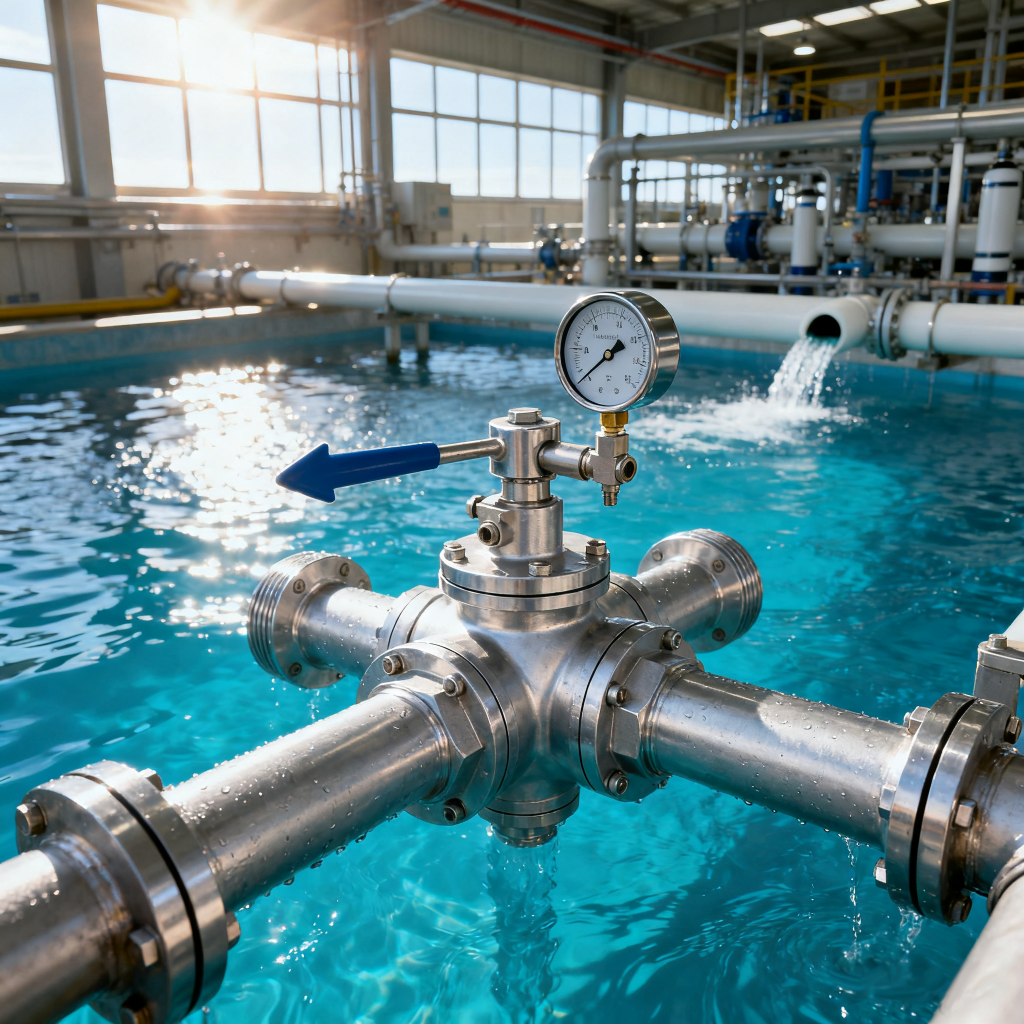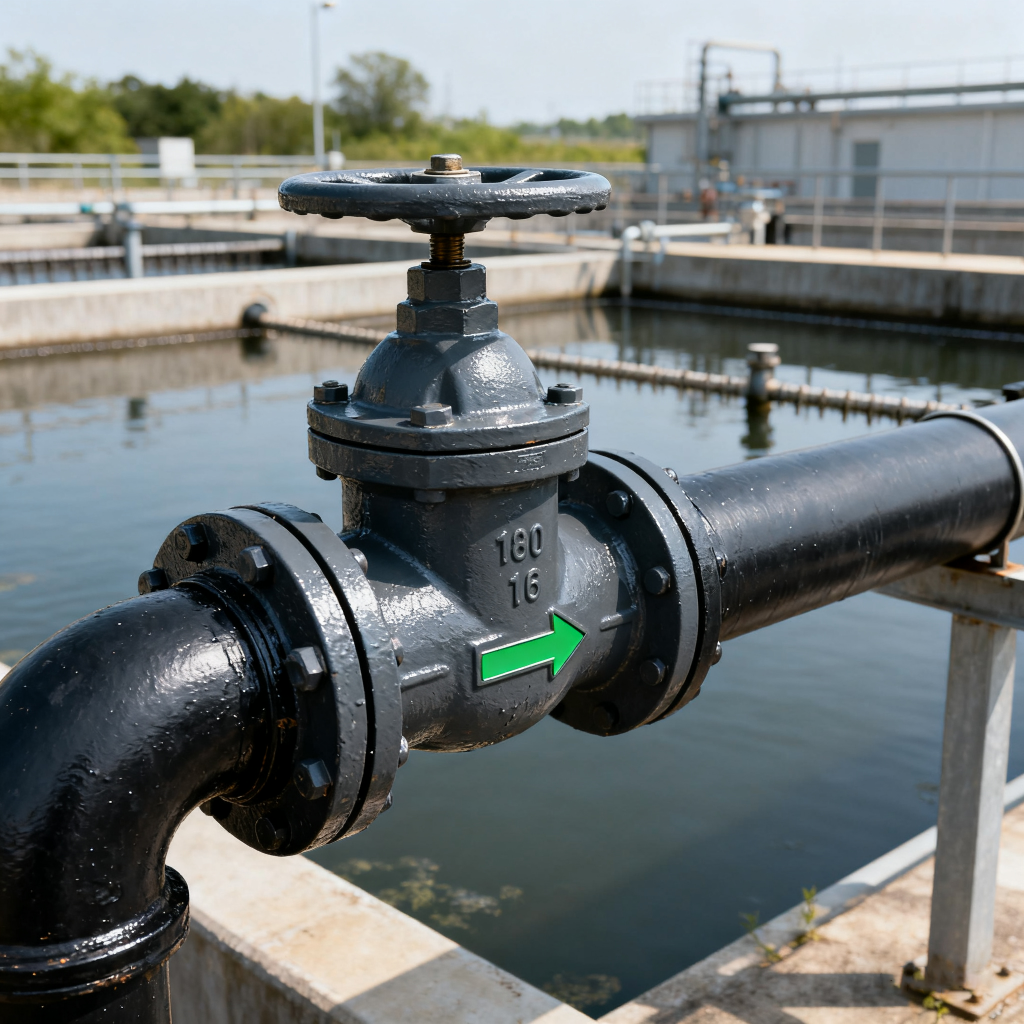In the oil and gas industry, reliability is critical. Valves keep production running smoothly, serving as the bridge between safety, efficiency, and profitability. Without dependable oil and gas valves, pipelines and refineries cannot regulate flow, pressure, or temperature effectively.
More than on/off devices, valves prevent leaks, control hazardous fluids, and protect equipment from overpressure. For buyers, selecting the best valve for oil and gas industry operations is not only a technical choice but also a business decision that impacts uptime, safety, and costs. Choosing specialized industrial valves for oil and gas pipelines is the first step toward the right investment.
1.Key Challenges in Oil & Gas Operations That Valves Solve
The oil and gas industry faces some of the harshest operating conditions in the world. Pipelines carry high-pressure crude, offshore rigs fight saltwater corrosion, and refineries handle extreme temperatures. In all these situations, oil and gas valves are the frontline defense.
One major challenge is pressure control. Without dependable control valves oil and gas plants rely on, pipelines could face dangerous over-pressurization. Another key challenge is corrosion, particularly in offshore oil and gas operations and sour gas conditions, where specialized industrial valves for oil and gas are required to withstand chemical attack and ensure long-term reliability.
Operational downtime is another costly issue. Choosing the best valve for oil and gas industry operations reduces the risk of leaks or breakdowns that can halt production. Simply put, the right valves solve problems before they escalate—protecting people, equipment, and profits.

2.Types of Valves Commonly Used in Oil & Gas
Different processes in the oil and gas industry require different kinds of valves. Each type addresses specific challenges, and knowing the options helps buyers make smarter choices:
- Ball valves – Among the most popular oil and gas valves, valued for quick shut-off and durability in high-pressure systems.
- Gate valves – Common in pipelines, providing tight sealing for reliable on/off flow control.
- Globe valves – Ideal for precise regulation, especially in refinery units where accuracy matters.
- Butterfly valves – Lightweight and efficient, perfect for applications with limited space.
- Plug valves & check valves – Designed for high-pressure or corrosive conditions, preventing backflow and ensuring system reliability.
- Specialized control valves oil and gas facilities use – Regulate flow and pressure in critical operations, enhancing safety and efficiency.
For long-term performance, buyers often select industrial valves for oil and gas that meet API standards, ensuring both safety and compatibility. By understanding the types of valves used in oil and gas, procurement teams can confidently choose the best valve for oil and gas industry operations.
3.Safety and Reliability: Why Valves Are Mission-Critical
In oil and gas operations, safety is never optional. Oil and gas valves play a crucial role in protecting both personnel and equipment. Poorly chosen or low-quality valves can lead to overpressure, leaks, and even catastrophic failures.
Control valves oil and gas facilities rely on regulate flow precisely, preventing dangerous spikes in pressure. Meanwhile, industrial valves for oil and gas pipelines ensure that corrosive fluids, high temperatures, and high-pressure conditions do not compromise system integrity. Safety relief valves act as the final safeguard, releasing excess pressure before it becomes hazardous.
Reliable valves also minimize downtime. For procurement teams, choosing the best valve for oil and gas industry applications means investing in products that meet API standards, endure extreme conditions, and deliver consistent performance. In short, safety and reliability are inseparable from valve quality.
4.High-Pressure Valve Control: Handling Extreme Conditions
Oil and gas pipelines often operate under extremely high pressures. Choosing the right oil and gas valves is critical to prevent leaks, equipment damage, or operational shutdowns.
Control valves oil and gas facilities rely on are specifically engineered to handle high-pressure environments. Their design includes thicker walls, high-strength materials, and precision trims that allow them to regulate flow and pressure safely. In upstream and midstream pipelines, industrial valves for oil and gas must withstand not only high pressure but also temperature fluctuations and corrosive substances.
For procurement teams, understanding the specifications of high-pressure valves ensures they select the best valve for oil and gas industry operations. A reliable high-pressure valve reduces maintenance needs, prevents downtime, and protects both personnel and equipment. In essence, high-pressure valve control is about managing risk while maintaining smooth, continuous operations.
5.Integration with Flow Measurement Devices: Enhancing Precision
Precision is crucial in oil and gas operations, and oil and gas valves play a key role when integrated with flow measurement systems. Accurate flow control helps prevent overproduction, overpressure, and inefficiencies in pipelines and processing plants.
Control valves oil and gas facilities rely on are often paired with flow meters, pressure sensors, and automation systems. This integration allows operators to adjust valves in real time, maintaining consistent flow and pressure under dynamic conditions. For procurement teams, choosing industrial valves for oil and gas that are compatible with measurement instruments ensures smooth operations and easier system management.
By selecting the best valve for oil and gas industry applications with proper integration capabilities, companies can optimize performance, reduce waste, and enhance safety. Smart valve integration is not just a technical improvement—it’s a business advantage that protects both personnel and assets.

6.Maintenance for Longevity: Ensuring Valve Performance
Proper maintenance is key to extending the life of oil and gas valves. Regular inspection, lubrication, and timely replacement of worn parts help prevent leaks, corrosion, and unexpected failures.
Control valves oil and gas facilities depend on require particular attention because their precise components directly affect flow and pressure regulation. Routine maintenance not only ensures operational efficiency but also improves safety, reducing the risk of accidents and downtime.
For procurement teams, selecting industrial valves for oil and gas with easy maintenance features—such as replaceable seals, modular trims, or accessible components—simplifies service procedures and lowers overall operational costs. Choosing the best valve for oil and gas industry operations is not only about performance but also about long-term reliability.
Well-maintained valves protect people, equipment, and profits, making maintenance a critical part of any oil and gas infrastructure strategy.
7.Safety and Reliability: Why Valves Are Mission-Critical
In oil and gas operations, safety is never optional. Oil and gas valves play a crucial role in protecting both personnel and equipment. Poorly chosen or low-quality valves can lead to overpressure, leaks, and even catastrophic failures.
Control valves oil and gas facilities rely on regulate flow precisely, preventing dangerous spikes in pressure. Meanwhile, industrial valves for oil and gas pipelines ensure that corrosive fluids, high temperatures, and high-pressure conditions do not compromise system integrity. Safety relief valves act as the final safeguard, releasing excess pressure before it becomes hazardous.
Reliable valves also minimize downtime. For procurement teams, choosing the best valve for oil and gas industry applications means investing in products that meet API standards, endure extreme conditions, and deliver consistent performance. In short, safety and reliability are inseparable from valve quality.
8.High-Pressure Valve Control: Handling Extreme Conditions
Oil and gas pipelines often operate under extremely high pressures. Choosing the right oil and gas valves is critical to prevent leaks, equipment damage, or operational shutdowns.
Control valves oil and gas facilities rely on are specifically engineered to handle high-pressure environments. Their design includes thicker walls, high-strength materials, and precision trims that allow them to regulate flow and pressure safely. In upstream and midstream pipelines, industrial valves for oil and gas must withstand not only high pressure but also temperature fluctuations and corrosive substances.
For procurement teams, understanding the specifications of high-pressure valves ensures they select the best valve for oil and gas industry operations. A reliable high-pressure valve reduces maintenance needs, prevents downtime, and protects both personnel and equipment. In essence, high-pressure valve control is about managing risk while maintaining smooth, continuous operations.
9.Integration with Flow Measurement Devices: Enhancing Precision
Precision is crucial in oil and gas operations, and oil and gas valves play a key role when integrated with flow measurement systems. Accurate flow control helps prevent overproduction, overpressure, and inefficiencies in pipelines and processing plants.
Control valves oil and gas facilities rely on are often paired with flow meters, pressure sensors, and automation systems. This integration allows operators to adjust valves in real time, maintaining consistent flow and pressure under dynamic conditions. For procurement teams, choosing industrial valves for oil and gas that are compatible with measurement instruments ensures smooth operations and easier system management.
By selecting the best valve for oil and gas industry applications with proper integration capabilities, companies can optimize performance, reduce waste, and enhance safety. Smart valve integration is not just a technical improvement—it’s a business advantage that protects both personnel and assets.

10.Maintenance for Longevity: Ensuring Valve Performance
Proper maintenance is key to extending the life of oil and gas valves. Regular inspection, lubrication, and timely replacement of worn parts help prevent leaks, corrosion, and unexpected failures.
Control valves oil and gas facilities depend on require particular attention because their precise components directly affect flow and pressure regulation. Routine maintenance not only ensures operational efficiency but also improves safety, reducing the risk of accidents and downtime.
For procurement teams, selecting industrial valves for oil and gas with easy maintenance features—such as replaceable seals, modular trims, or accessible components—simplifies service procedures and lowers overall operational costs. Choosing the best valve for oil and gas industry operations is not only about performance but also about long-term reliability.
Well-maintained valves protect people, equipment, and profits, making maintenance a critical part of any oil and gas infrastructure strategy.
Conclusion
Selecting the right oil and gas valves is more than a technical decision—it’s a strategic one. From regulating flow and pressure to ensuring safety and reliability, the right valve affects every aspect of operations.
By understanding types of valves used in oil and gas, considering maintenance needs, and choosing quality control valves oil and gas and industrial valves for oil and gas, procurement teams can make informed choices. Investing in the best valve for oil and gas industry applications not only protects personnel and equipment but also reduces downtime and operational costs.
Ultimately, well-chosen valves keep oil and gas operations running smoothly, safely, and efficiently.